Since fires swept through the Garden Route from Sedgefield, through Goukamma Valley, Knysna and Plettenberg Bay a year ago, horticulturist, Charles Reitz, has observed and taken notes of the natural processes occurring in both indigenous undisturbed areas as well as in cultivated and urban areas. His keen observations throw new light on what is often mistaken as common sense. So that we may learn from this dramatic natural occurrence, here are some notes highlighting his observations and thoughts.
How does erosion caused by fire serve nature?
It is common for one to panic about post- fire erosion, but eroded material simply goes down the hill and settles somewhere else, forming a niche for something else to grow. If erosion did not take place, the plants lower down would never receive the additional nutrition or an extra layer of soil which is fed by rivulets moving slowly downhill. As the cycle is repeated soil is replaced on the upper levels by plant materials being formed, as well as by birds and animals. It’s important to note that due to gravity, all land will tend towards ‘flatness’ and erosion is only a “problem” where humans are settled.
After fire, how does previously disturbed land compare with previously undisturbed land?
Previously disturbed land poses a major post fire rehabilitation problem in terms of erosion and/or invasion. While we have concluded that it is natural for erosion to occur, it is also natural for sloping ground to become vegetated, but this will only occur when erosion happens to a much lesser degree, if at all. The alien vegetation in areas of the Garden Route burned so hot and so long that it destroyed much fynbos root mass along with leaf litter and debris. This lack in undergrowth and root mass on disturbed and previously cultivated land can result in a layer of substrate to slide off.
Because there is less fine, fibrous root material just beneath the soil surface, downpours are likely to create erosion channels. But major mud landslides of heavy soils will only occur where trees have been totally removed with their roots (or when remaining roots have disintegrated) and the cultivated zone has little attachment to the subsoil strata like rock or clay.
In previously undisturbed areas, cutting down remnant stems and laying them in rows is a waste of energy. “Neatening” up the landscape appears to be a fetish of some landowners in an effort to “rehabilitate” land. But there is beauty in observing the natural rehabilitation of fynbos/bush in zero disturbance zones.
In terms of natural re-vegetation, not all specimens survive, but their speedy manifestation and quick death plays a role in the rejuvenation process. This is also the case with the invasive plant Acacia cyclops in dune slacks: 5000 seedling/m2 will not all survive. Major areas in the dunes were cleared of burnt sticks shortly after the fires and placed in dune slacks, ‘’neat and tidy’. This was not only a waste of energy but will also protect the copses of aliens which then mature unhindered.
It appears therefore, that the problem of erosion rests on disturbed versus undisturbed land. And since the germination of alien seed banks in disturbed land will be prolific, the challenge to manage this requires careful thought and attention.
What role do baboons play after fire?
Since the fire devastation I have observed baboons digging up and eating a plant called Tritoniopsis – a small bulb with a lily-like flower.
It appears the baboons are making a mess in the process and disturbing the landscape, but on closer inspection three to six months later, I found that the dug-out holes have filled up with eroding sand and Keurbooms (Virgilia spp.) are growing more prolifically, and in better condition, than other Keurbooms in the area.
They are healthy and likely to survive, creating shade for other plants to germinate and become established.
On the other hand, perhaps due to the lack of a variety of food source since the fire, the baboons might be inclined to scrounge in human habituated areas, finding vegetables and other weedy plants which are now likely to be spread, finding their way into our fynbos areas. Many of these will get smothered by the regenerating indigenous vegetation, but some Solanum species, among others, spread easily and will be an annoyance if they dominate certain niches.
What role do birds play during post-fire rehabilitation?
There is a natural beauty to the landscape after a fire and cutting down burnt plant material to keep things “neat and tidy” is merely a modern human reaction. There is no need to cut anything down to “help nature”. The remains of burnt trees play a vital role in the regeneration process after a fire. Birds need to sit high up to sight and go after insects which are plentiful after a fire because their eggs survive underground.
Creepers, such as the Dipogon which is prolific now in untouched areas that have burnt, climb burnt sticks and form nests for birds to avoid predators such as mongooses. The burnt material is also important for sand and dune soil stabilisation because it creates points of collection for dust particles in the air and supports a micro-climate, creating an environment for more variable regrowth.
What is important for protecting properties against fires?
Keeping a green garden is essential for keeping homes safe during times of high fire risk.
By living in a community, we feed water to our collective properties, some of which runs over the boundaries and keeps the surrounding areas green, thereby protecting them from fire. To save one’s home from a fire one needs to have well-watered green growth surrounding it – greener than the areas further away from the house.
For example, if one considers the houses along Plettenberg Bay’s Beachy Head road, the properties which had irrigation were those that survived. On any property, urban or rural, keeping a green garden is essential for keeping homes safe during times of high fire risk.
Therefore, it’s vital in these times of drought to consider and plan for urban rain water collection wherever possible.
Why do Anisodonteas dominate a random east-facing slope?
From my observations the speedy germination rate of the Cape Mallow lends itself as a pioneer, dominating slopes where originally Passerines flourished and stabilising areas that would otherwise struggle to host other slower growing species.
Why do plants proliferate in stony pathways more than elsewhere?
I observed that pathways where stones have accumulated are the first to show signs of greenery. The abundance of stones creates niches where plants or seeds have access to micro-climates which stay moist and maintain a favourable temperature. These pathways are less exposed to damage during germination. Therefore, these cleared zones are in fact sensitive cultivation areas but in the process of garden maintenance they are often sprayed with herbicides. Whereas if they were simply “used” the vegetation would flatten, and the path would persist naturally.

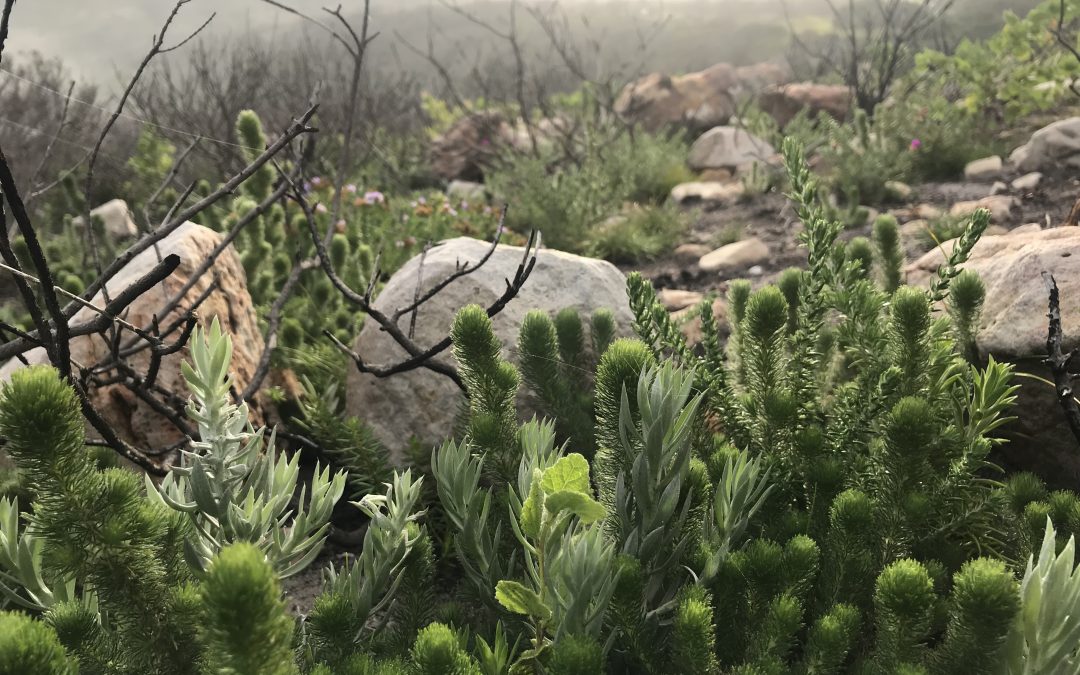

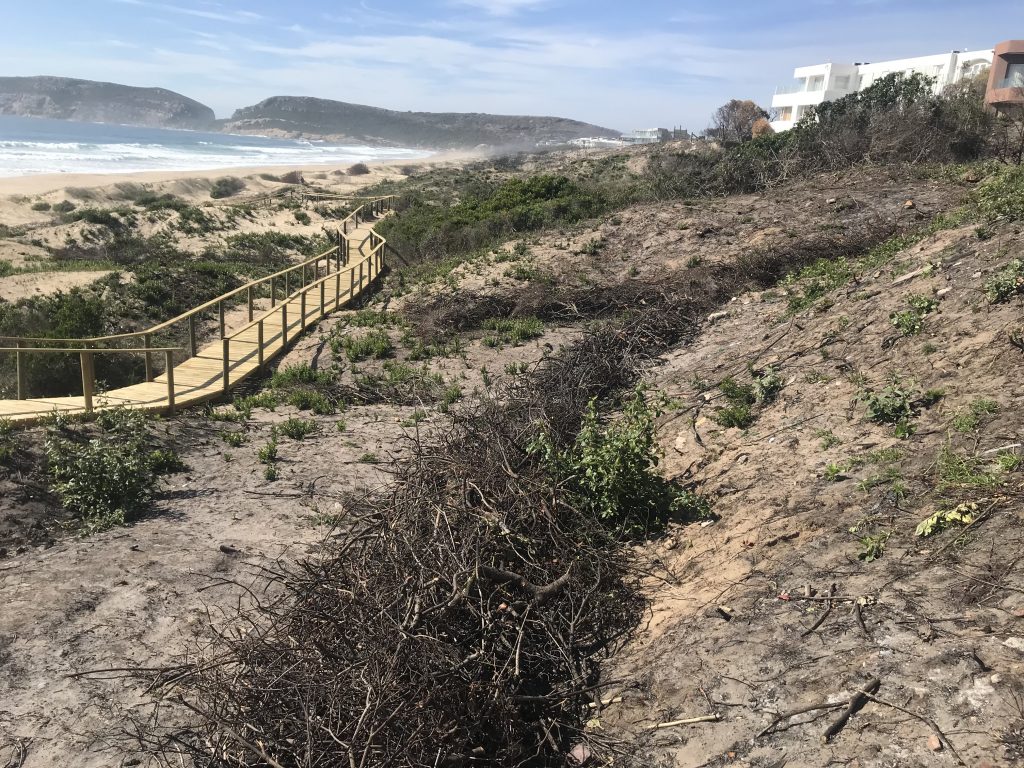
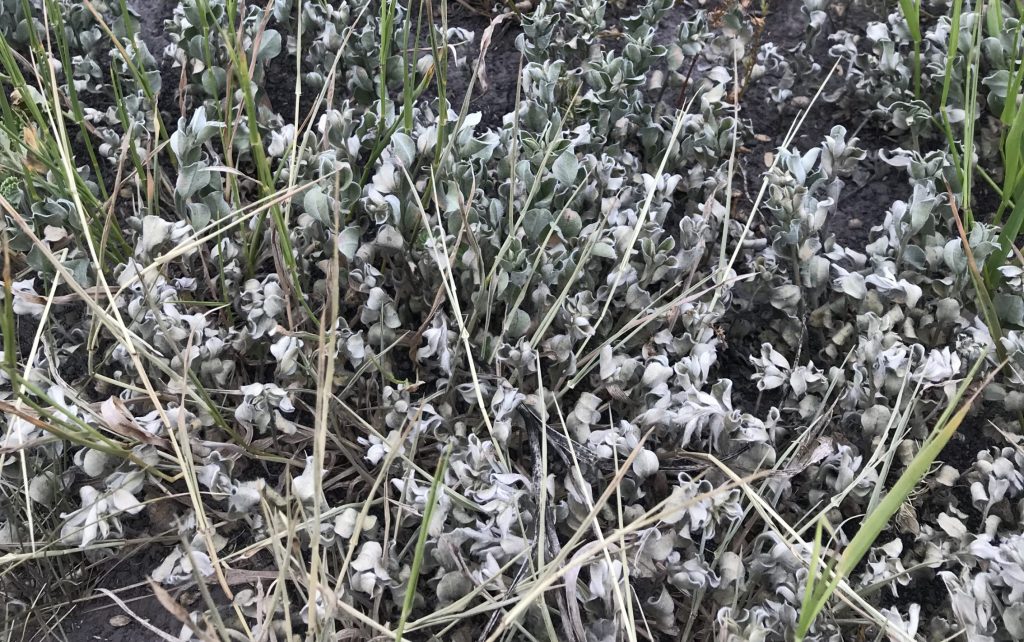
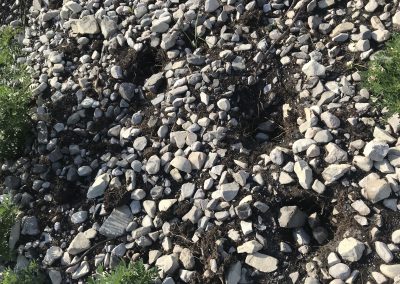
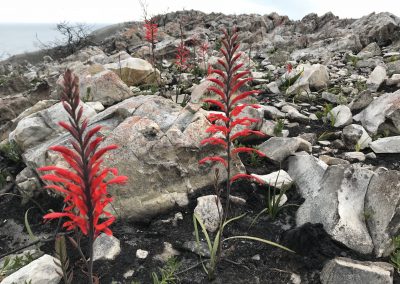
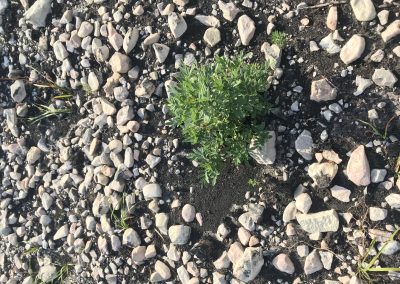
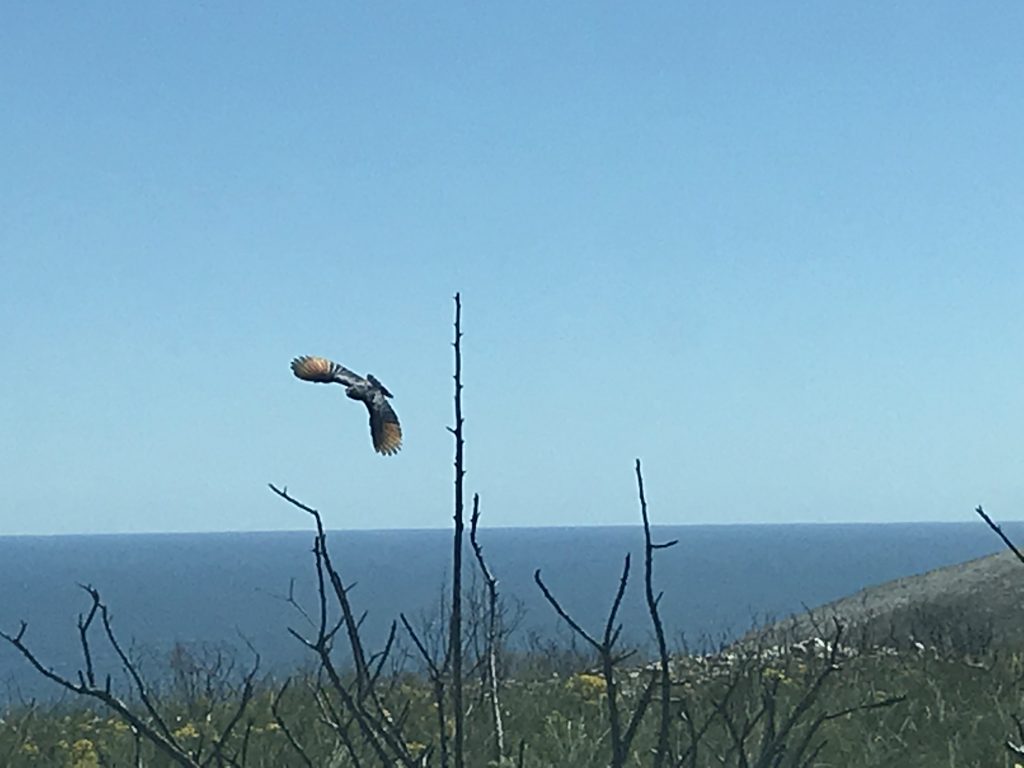
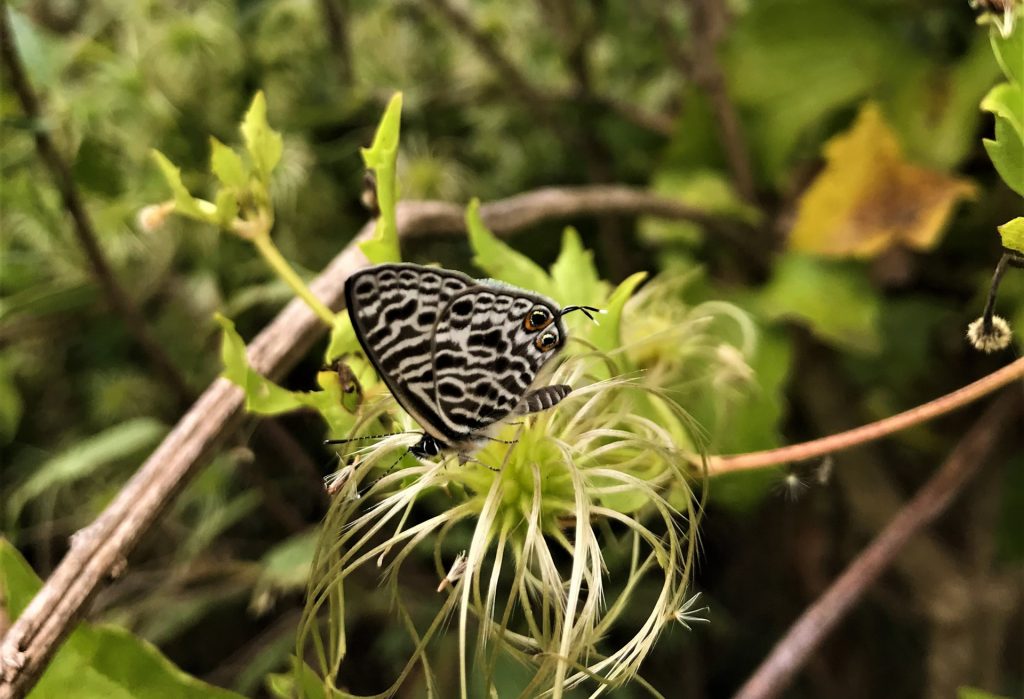
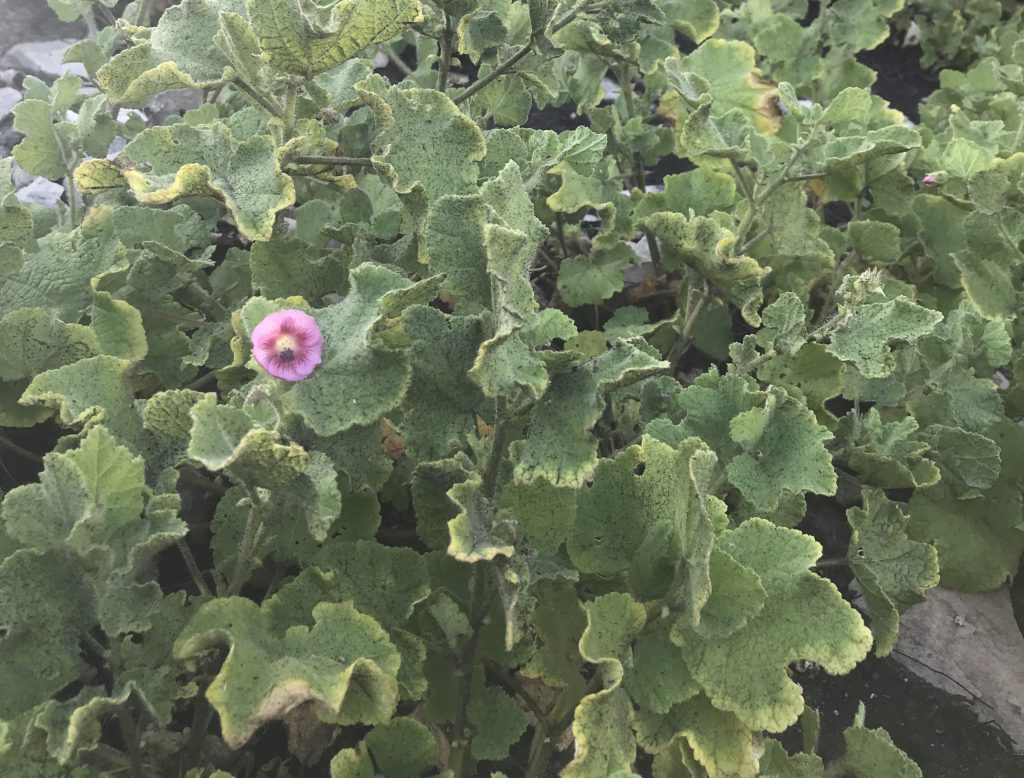
Recent Comments